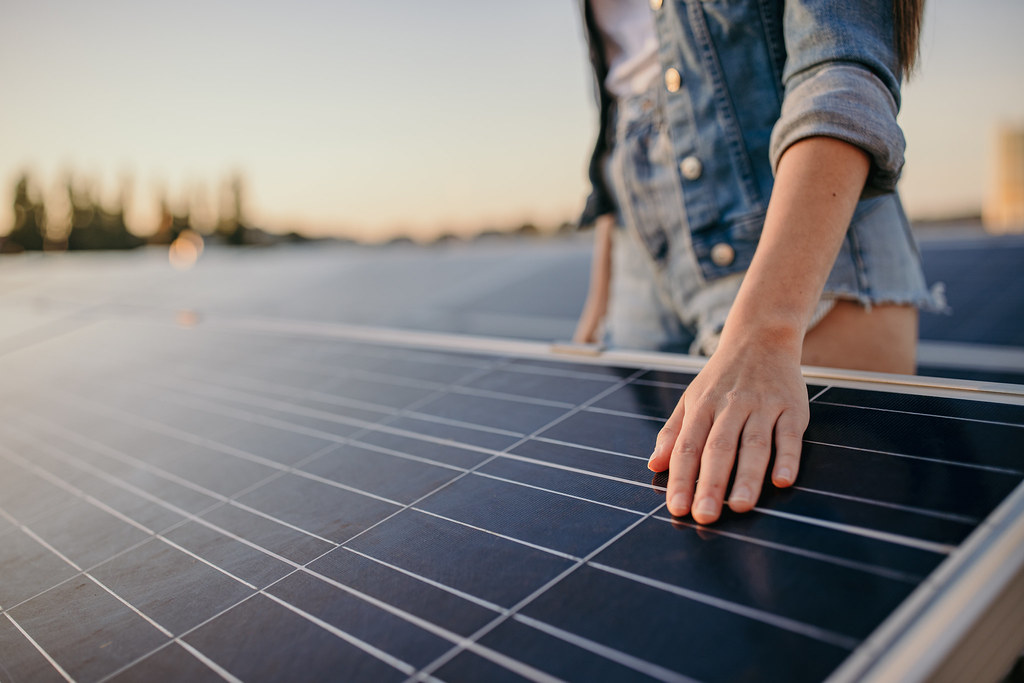
Some Indonesian solar manufacturers, like PT Nusa Solar, have been identified as being operated by Chinese-backed companies. (Photo: PT Nusa Solar)
As the U.S. weighs tightening trade actions against Chinese solar companies for alleged circumvention of duties, Indonesian solar firms believe domestic demand could absorb potential losses from decreased exports.
Experts say U.S. manufacturers are urging stronger enforcement partly due to rapid technological shifts, which require them to break even within three to five years—or risk permanently falling behind China.
Local manufacturers confident domestic market can fill export gap
Beny Sulaiman, Business Development and Commercial Director at PT Jembo Energindo, an Indonesian solar module producer, said that with sufficient government support, Indonesia’s local market could take in much of the nation’s solar production. He argued that the impact of U.S. tariffs on Indonesian manufacturers would therefore be limited.
Beny pointed to Indonesia’s large and growing market, along with the government's commitment to expanding renewable energy. Under the National Electricity Supply Plan (RUPTL), the country aims to add 100 gigawatts of new generation capacity by 2040, with over 70% expected to come from new and renewable sources, mainly solar, creating robust demand for green electricity.
According to Bloomberg, U.S. anti-dumping and countervailing duties have hit exports from Cambodia, Malaysia, Vietnam, and Thailand. As production shifts, Indonesia and Laos have seen sharp increases in solar shipments to the U.S. In May 2025, the two countries accounted for 44% of U.S. solar imports, a jump of 42.1 percentage points from a year earlier.
Read more: U.S. solar tariff barriers may expand to Laos, Indonesia, India with new trade petition
Fabby Tumiwa, Executive Director of the Institute for Essential Services Reform (IESR), an Indonesian energy transition think tank, said the U.S. solar industry is pushing for broader investigations because its production costs remain significantly higher than those in Southeast Asia, China, and India. He noted that Chinese solar tech is around 60% cheaper than U.S.-made systems, while Indian and Southeast Asian products cost 20% to 30% more than China’s.
Fabby warned that American manufacturers are racing against time. Without economies of scale and facing fast-paced innovation, where efficiency improves every three to five years, they must move quickly to limit foreign competition or risk falling irreversibly behind.

Indonesian companies believe that the local market could take in much of the nation’s solar production. (Photo: iStock)
Batam becomes a tariff workaround hub for Chinese firms
Bloomberg also highlighted that Indonesia’s Batam Island, just 20 kilometers from Singapore, has become a popular base for Chinese solar firms seeking to sidestep U.S. duties. In the first half of 2025, Indonesia’s top ten solar exporters to the U.S. shipped $608 million worth of panels and cells—six of those companies are based in Batam and have ties to Chinese ownership.
The Trump administration never formally defined "country of origin laundering" or “transshipment”, so it remains unclear whether Chinese-backed producers in Batam will face future tariffs. The Batam Indonesia Free Trade Zone Authority (BP Batam), which oversees the island’s economic zone, said it has received no notice of anti-dumping investigations and emphasized its commitment to fair and transparent international trade.
While the U.S. has yet to launch a formal probe into Indonesia, some Chinese companies are already diversifying risk. JA Solar plans to open a new plant in Oman by the end of the year, and JinkoSolar is exploring opportunities in the Middle East, including a new battery factory in Saudi Arabia.
BloombergNEF analyst Felix Kosasih noted that Indonesia’s new import duty rate has dropped from 32% to 19%, making the country more attractive than some of its regional peers. However, Cosimo Ries, an analyst at Trivium China based in Shanghai, warned that renewed trade tensions under a potential second Trump presidency add uncertainty—especially for solar, one of the most exposed sectors—making long-term investment decisions increasingly complex.
Source: Jakarta Post, Bloomberg
.jpg)


